No visit to Boston is complete without a visit to the Freedom Trail. Experience Boston's history by foot, and get to know why it's often called "the cradle of the American Revolution."
Boston’s Freedom Trail is truly one-of-a-kind. Comprised of churches, museums, meeting houses, cemeteries, the USS Constitution, monuments, and more, the Trail walks you through the history of the American Revolution and beyond in Boston, and is an absolute must-see when you’re in the area.
While you can take a tour, and there are many available, you really don’t need to. It’s very easy and straightforward to do the trail self-guided, and there are a variety of apps and resources available for extra information.
But never fear, we have all the information you need right in this post!
Basic Info:
Table of Contents
ToggleIn total, the Freedom Trail is about 2.5 miles in length, and you should absolutely plan to do the whole thing. We’d recommend that you budget a half-day or more to truly make the most of your experience. While the Freedom Trail can be completed end-to-end in about 2 hours, you will surely want to enter some of the attractions, or perhaps pause to learn more, get a bite to eat, or detour for a bit.
The Freedom Trail is great for all ages and activity levels, and is largely flat and paved. It’s also almost impossible to get lost– just follow the brick path (usually 2 bricks wide in the middle of the sidewalk) to stay on the trail. The Trail ends in Charlestown, at the Bunker Hill Monument and USS Constitution, and you can either meander your way back downtown by foot or hop on a bus or ride-share to get to wherever you’d like to visit next.
See below for a step-by-step guide to the Freedom Trail’s 16 stops, as well as our additional bonus stops for treats, photo ops, and more! Enjoy!
Stop 1: The Boston Common
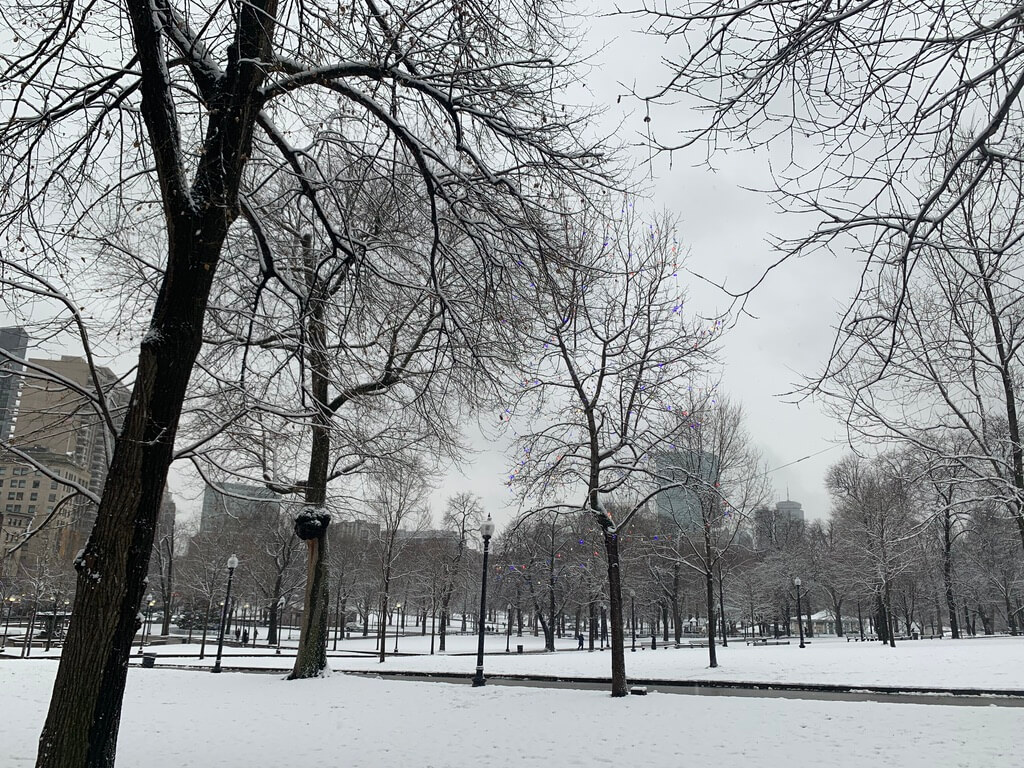
The Boston Common is the oldest city park in the U.S., dating all the way back to 1634! Originally used as a cow pasture, it has also been used as a public gallows, an encampment for British soldiers during the American Revolution, and a communal gathering space. Today, its 50 acres are a serene and relaxing place to spend some time picnicking or strolling around. Crossing Charles Street, the Common becomes the Public Garden, with beautiful seasonal landscaping, Swan Boat tours, the adorable “Make Way for Ducklings” statue, and relaxing pathways to explore before or after beginning the Freedom Trail. The Common is now a National Historic Landmark and is arguably Boston’s greatest treasure.
Stop 2: The Massachusetts State House
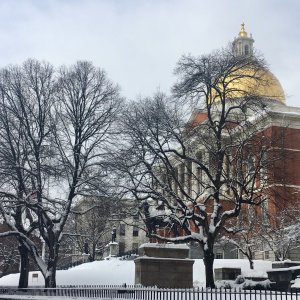
Serving as the state capitol and seat of government for the Commonwealth of Massachusetts, the Massachusetts State House is hard to miss with its sparkly gold dome. Also a National Historic Landmark, the State House replaced its smaller predecessor (seen later on the Trail) in 1798. The Secretary of the Commonwealth’s office holds free tours (available daily) of the beautiful interior, which is well-worth a visit. See here for details and to book.
Add-On: The Black Heritage Trail
We strongly recommend taking the time to explore the Black Heritage Trail prior to continuing on your Freedom Trail journey. The path stops at several sites important to Black history in the Beacon Hill neighborhood of Boston.
Must-see sites include: the 1806 African Meeting House (the oldest Black church in the country); the Abiel Smith School, now the Museum of African American History; and the Lewis and Harriet Hayden House, a stop on the Underground Railroad.
Despite the fact that it was the first state in the U.S. to ban slavery in 1783, Massachusetts, and Boston in particular, continue to struggle with a past and present of entrenched and systemic racism and injustice. In the years after slavery was outlawed, a large community of former slaves settled in the Beacon Hill area, creating meeting houses, schools, and other institutions. The Black Heritage Trail tells their stories.
Here are the stops on the trail:
- Stop 1: Monument to the Massachusetts 54th Regiment
Located across the street from the State House (see Stop 2 on the Freedom Trail above), there is a monument depicting the Black soldiers who fought for the Union, the subject of the film Glory, as they marched down Beacon Street after the end of the war. - Stop 2: Abiel Smith School, 46 Joy Street
Now home to the Museum of African American History— really worth a visit. - Stop 3: African Meeting House, 8 Smith Court
Known colloquially as “Black Faneuil Hall,” this is the oldest Black church in the country, and the site of many speeches by Frederick Douglass and other abolitionists. - Stop 4: Charles Street Meeting House, 70 Charles Street
Historic church built in the 1800s. - Stop 5: John Coburn House, 2 Phillips Street
Home of abolitionist John P. Coburn in the early 1800s, still a private residence today. - Stop 6: Lewis and Harriet Hayden House, 66 Phillips Street
A famed stop on the Underground Railroad, the Hayden house was home to Lewis and Harriet, who escaped slavery in Kentucky and came to Boston. Fun fact: Harriet Beecher Stowe interviewed them when researching for her book Uncle Tom’s Cabin. - Stop 7: George Middleton House, 5 Pinckney Street
Middleton served as the commander of one of two all-Black units in the American Revolution, and was also an accomplished violinist and founder of the African Benevolent Society. - Stop 8: Phillips School, corner of Pinckney & Anderson Street
Originally opened as a school for white children only, the Phillips School became one of the first integrated schools in the state when Massachusetts integrated schools in 1855. - Stop 9: Smith Court Residences, 5, 7, 7A, 4 and 2 Smith Court
Despite being private homes and not open for touring, the homes exemplify those built by Black residents in the early 1800s. - Stop 10: John Smith House, 86 Pinckney Street
Home of abolitionist and 3-term state representative John J. Smith.
Stop 3: Park Street Church
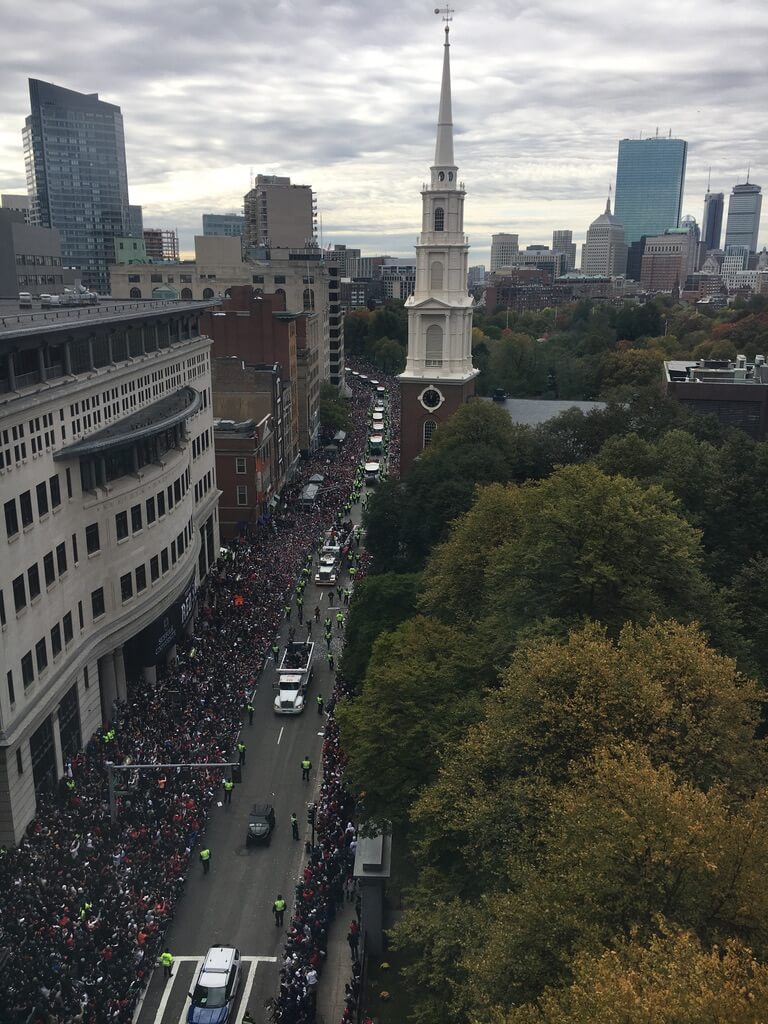 Built in 1809, the Park Street Church debuted the song “My Country ‘Tis of Thee” in 1831 and boasted among its membership several prominent abolitionists. The inside of the church is quite lovely, and worth a peek.
Built in 1809, the Park Street Church debuted the song “My Country ‘Tis of Thee” in 1831 and boasted among its membership several prominent abolitionists. The inside of the church is quite lovely, and worth a peek.
Note: photo was taken during Red Sox victory parade, 2019 World Series. Crowds line the sidewalks, and the semis in the middle have the victorious team aboard!
Stop 4: Granary Burying Ground
Attached to Park Street Church, the Granary Burying Ground was first founded in 1660 (making it Boston’s 3rd-oldest cemetery), is the final resting place for many of the U.S.’s earliest patriots, including Paul Revere, Samuel Adams, John Hancock, and Robert Treat Paine, as well as those killed in the Boston Massacre.
Stop 5: King's Chapel + Burying Ground
Continuing along Tremont Street, you will see the King’s Chapel and attached Burying Ground on the right side of the road, about 2 blocks from the Granary Burying Ground. Note that, despite being attached, the Burying Ground is not affiliated with the Chapel and never has been– it’s over 100 years older than the chapel, which was completed in 1754.
Stop 6: Benjamin Franklin Statue + Original Site of Boston Latin School
The Boston Latin School was established in 1635 at this spot, making it the oldest school in the country. It is now located in the Fenway area of Boston. Notable early alumni include a whopping 5 signers of the Declaration of Independence: Benjamin Franklin (who has a statue nearby despite dropping out!); Samuel Adams; John Hancock; Robert Treat Paine; and William Hooper.
Stop 7: Old Corner Bookstore + Irish Famine Memorial
On the corner of Washington and School Street, there is a cute bookstore dating back to 1718. Across the street, be sure to check out the Irish Famine Memorial, opened in 1998 in memory of those who died during the Great Famine of the 1840s and 1850s.
Bonus: Downtown Crossing
The next few stops on the trail are in the area of downtown known as “Downtown Crossing.” Predominantly a walking street, there is lots of shopping, fast casual, and other options in this area if you’re wanting to take a quick break.
Stop 8: Old South Meeting House
The Old South Meeting House is not only historic, dating back to 1729, but also infamous– as the organizing site for the Boston Tea Party in 1773. The Meeting House was the largest building at the time, and served as the organizing locale for the later raid of 3 British tea ships. This association with the Revolution led it to be occupied by the British from 1775 until their evacuation from Boston on March 17, 1776, today still celebrated as a local holiday in Boston and Suffolk County.
Stop 9: Old State House
At the intersection of Washington and State Street, you will see the Old State House, dating back to 1713. It’s considered one of the oldest buildings in the country, and served as the seat of government until moving to the current State House in 1798 (see Stop 2 above!) There is a museum inside that you can check out if you’re interested.
Stop 10: Site of Boston Massacre
Directly in front of the Old State House, there is a large circular plaque denoting the site of the March 5, 1770 Boston Massacre, where a skirmish between colonists and British soldiers turned deadly. Often considered a major catalyst for the American Revolution, which erupted a few years later, news of the altercation spread like wildfire among the 13 colonies.
Stop 11: Faneuil Hall
Faneuil Hall is a historic marketplace comprising Quincy Market, North Market, and South Market. Originally built in 1740, today it is a popular tourist destination, and you’ll definitely want to spend some time exploring here. If you’d like to sample lobster rolls or clam chowder, this is a pretty good place to do so. We recommend hot lobster rolls over cold, with lots of melted butter drizzled on top, and definitely get the bread bowl with your clam chowder! Peter Faneuil, who built the market at his own expense in 1740, was a slave merchant by trade, and in recent years public outcry has led to a movement to change the name of the Hall.
Stop 12: Paul Revere House
Continuing along the trail (following those bricks!) to the North End, Boston’s “Little Italy,” the next destination is the Paul Revere House. Built in 1680 or thereabouts, it was Paul Revere’s home during the Revolution years and today is a museum (admission is charged upon entry.)
Stop 13: Old North Church
Our favorite history stop on the Freedom Trail, the Old North Church is said to be the site where Paul Revere hung his “one if by land, two if by sea” lantern signal, preceding his infamous “Midnight Ride” and the Battles of Lexington and Concord, which kicked off the American Revolution. The plaza area nearby was renovated very recently, and there’s a majestic statue of Paul Revere on his horse, as well as some period shops to peek into (like a chocolate shop and a type-setter shop.)
Bonus: North End
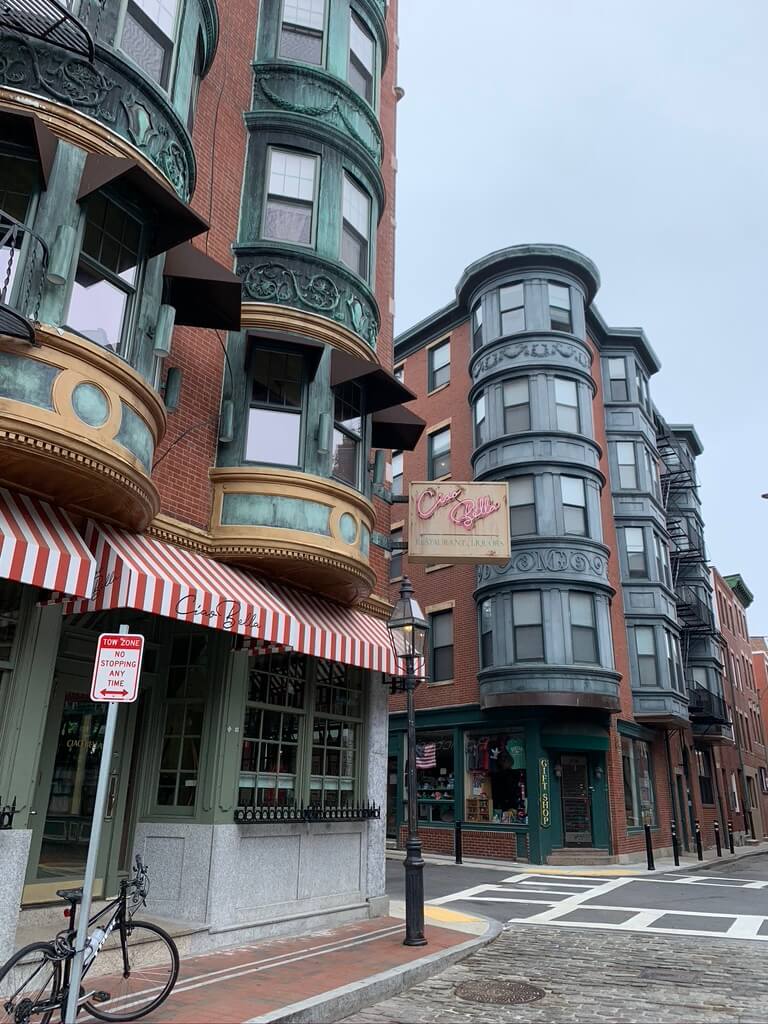 As you walk around the Paul Revere House and Old North Church, note that you will definitely want to spend some time in the North End, either at the end of the Trail on your way back, or taking a little detour while you’re here.
As you walk around the Paul Revere House and Old North Church, note that you will definitely want to spend some time in the North End, either at the end of the Trail on your way back, or taking a little detour while you’re here.
The North End contains some of Boston’s oldest surviving architecture, as well as to-die-for Italian fare, from pizza (we recommend Regina’s) to lasagna (we recommend the lunch lasagna at Antico Forno) to home-made pasta (we recommend the squid ink pasta at Monica’s or Giacomo’s legendary pasta, if you’re willing to wait in line.) Of course, no trip to the North End is complete without staking your claim in the epic cannoli rivalry of Mike’s Pastry versus Modern Pastry. We are a house divided on this one– Tegan prefers Modern, Alex prefers Mike’s. Which will you choose? For more information on the North End, check out our Definitive North End guide here!
Note: right nearby is the TD Garden, one of Boston’s premiere sports arenas. For everything you need to know about TD Garden (seeing a game, getting tickets, etc.) check out Itinerant Fan’s TD Garden guide.
Stop 14: Copp's Hill Burying Ground
The city’s 2nd-oldest burial ground and 3rd cemetery on the trail, the Copp’s Hill Burial Ground, built in 1659, is further along the Trail past the North End.
Stop 15: The USS Constitution
If you continue across the bridge into Charlestown (a neat experience in and of itself!), you can’t miss the USS Constitution, also known as Old Ironsides. Originally launched in 1797, the USS Constitution gained fame and popularity during the War of 1812, when she defeated 5 British warships single handedly. Today, Old Ironsides is still a fully commissioned Navy ship, and sailed under her own power as recently as 2012. The museum is free (they ask for donations), and you can pay for tickets to go on board separately.
Stop 16: The Bunker Hill Monument
Your tour culminates at the Bunker Hill Monument, erected in 1825 to commemorate the American Revolution’s Battle of Bunker Hill, fought June 17, 1775. You can trek up to the top (up a very narrow and very steep staircase!) or explore the area around it.
From here, definitely spend some time exploring Charlestown, a very historic part of Boston, and also where most of Ben Affleck’s The Town takes place. You can walk back to downtown or your next destination from here, or take a bus or ride-share.
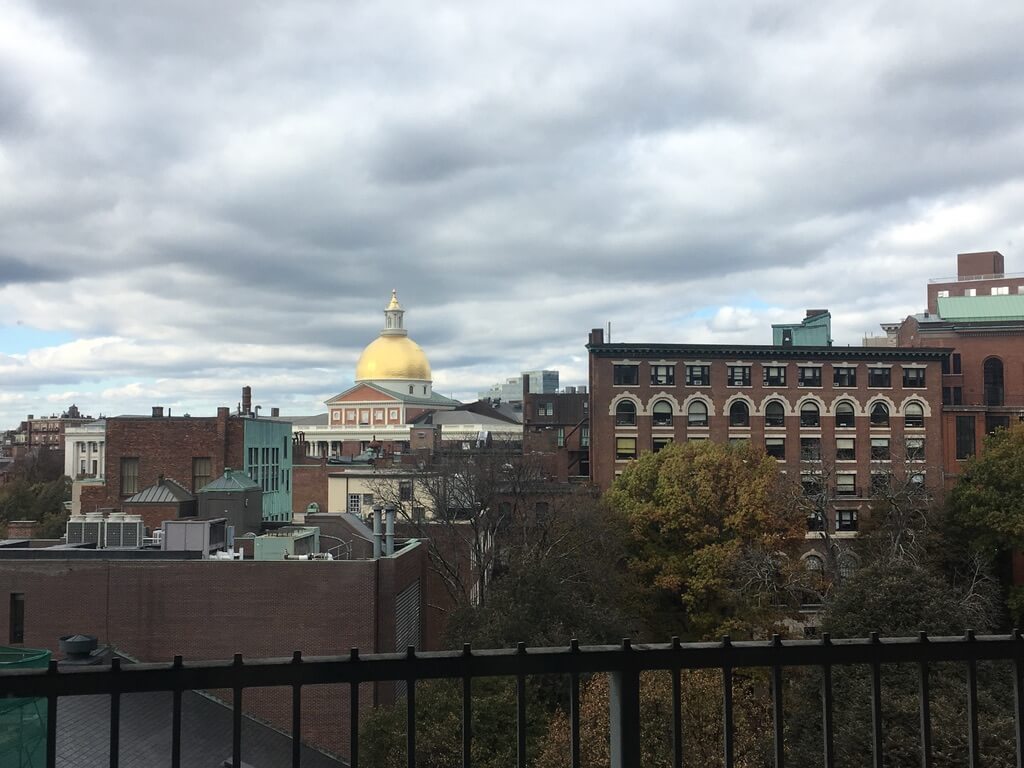
For more Boston content, from a 101 guide to your first visit to Boston brews, food, biking, day trips, and more, check out our Boston landing page here.

6 comments
So interesting! Great way to learn history!
Such a great overview of the freedom trail! It really is the best way to see the best sites in Beantown! Have done it a couple times and it never gets old.
We look forward so much to doing it whenever we have visitors, and even sometimes just us 🙂 Haha!
Thanks for this detailed account of Boston which is one of my favorite places to visit and explore. Can’t wait to go back again.
So glad you liked it! Hope you’re able to come back soon.
Great photos! I love Boston.
Comments are closed.